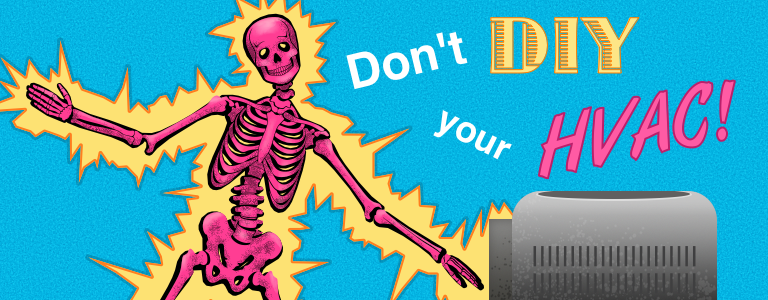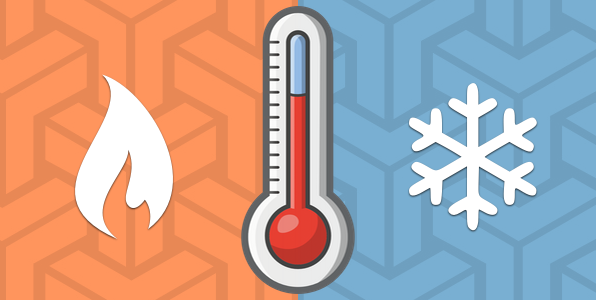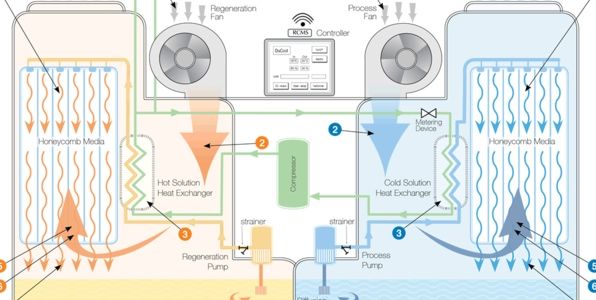Blog Roundup: 5 of our Favorite Bob Jenson Posts
Now that it’s spring, we have some questions for you: Are you dealing with piled-up clutter from messy kids and adults who have been indoors more than usual? Does everything just feel like it needs a good scrubbing down and airing out? There’s a reason spring is associated with cleaning season, a time for renewal and reassessing the inner workings of your household.
Not only that, but spring is the perfect time of year to check your furnace, examine how well your home’s air ventilation and AC is working, and make sure that you’re saving money on your energy bills as we head into the warmer seasons.
In order to help you prepare for springtime, we’ve rounded up five of our favorite Bob Jenson blog posts that’ll keep your home — and health — in top shape this spring.
Spring Cleaning to Reduce Allergens
Springtime isn’t a bright, sunny picnic for everybody — those who suffer from seasonal allergies can have a tough time in the spring with so much pollen in the air. Spring cleaning can also shift a lot of built-up dust and debris in your house, so it’s no wonder it can be hard for sufferers to find relief.
While you can’t control the trees and flowers blooming, you can get a handle on your household’s allergens. Our handy blog post, Spring Clean These 6 Things to Reduce Allergens, names the top things in your home to clean to reduce allergy symptoms. These are things you’d likely expect (pillows and bedding) and some you might not (when’s the last time you cleaned your curtains?).
Decorate for Better Air Quality
It’s true you can decorate — or redecorate — any time of year, but there’s just something about spring that makes it feel like the perfect time to rearrange things around the home and try something new. This is also a great time to assess your home décor and how it’s affecting your indoor air quality. We’re thinking of carpeting that traps dirt and dust, or using chemical-filled candles and air fresheners.
In 4 Home Decorating Tips for Better Air Quality, we put a heavy emphasis on going green, especially when it comes to adding plants to your home to improve air quality and swapping your air fresheners for natural products. You’ll also want to take the time to replace your furnace and air conditioner filters — they play a huge part in the health of your home!
5 Mistakes San Diego Homeowners Make in Spring
If you’re a homeowner in San Diego, you already know how important it is to take care of particular parts of your house, such as cooling systems for our hot summers and air filters to catch all the dust in your home. It’s smart to use springtime as a chance to examine your property and make sure that you’re not making any of the mistakes we detail in our 5 Mistakes San Diego Homeowners Make in Spring blog post.
For example, although we already mentioned dusting and cleaning your bedding, have you been skipping an annual HVAC maintenance check? Even if you’re diligent about ensuring that the filters are clean, there could be problems you’re missing.
Regular preventive maintenance is necessary to keep your HVAC running smoothly, and it’s especially vital to get it checked before you have to turn on the air conditioning. Check out our Maintenance Program to find out how you can save on these services.
Get Ready for Flu Season
Thinking about flu season in the spring might seem crazy, but bear with us. Although many people think the flu strikes only during the winter, it can pop up in any season, and it can be even worse in the springtime. Plus, if you’ve got children, you know how tough it can be to quarantine your family at home.
Fortunately, our 3 Ways to Get Ready for Flu Season blog post has some tips to help you prepare your household. For example, is your home equipped with a good humidifier? Cold and flu germs have a hard time surviving in humid environments, which is why it’s important to get one running as soon as a member of your household starts sniffling. And of course, making sure your HVAC filter is clean is a big help when it comes to helping everyone breathe a little easier.
Tips for Spring Home Maintenance
If you need a quick refresher for spring cleaning along with some handy tips, our Spring Home Maintenance Tips blog post is a must-read. Even if you think you’ve got a handle on how to clean your home, have you considered what parts of your walls need a good washing? How about your fridge? And speaking of places where there might be mold growth, have you checked your attic’s ventilation lately? We’ve got these reminders for you, and a whole lot more.
Bob Jenson Air Conditioning & Heating installs and services HVAC systems throughout San Diego County. Be sure to keep your eye on our blog for regular posts that can help you make your home more comfortable and energy-efficient, and get in touch with us when it’s time to call in a professional.










